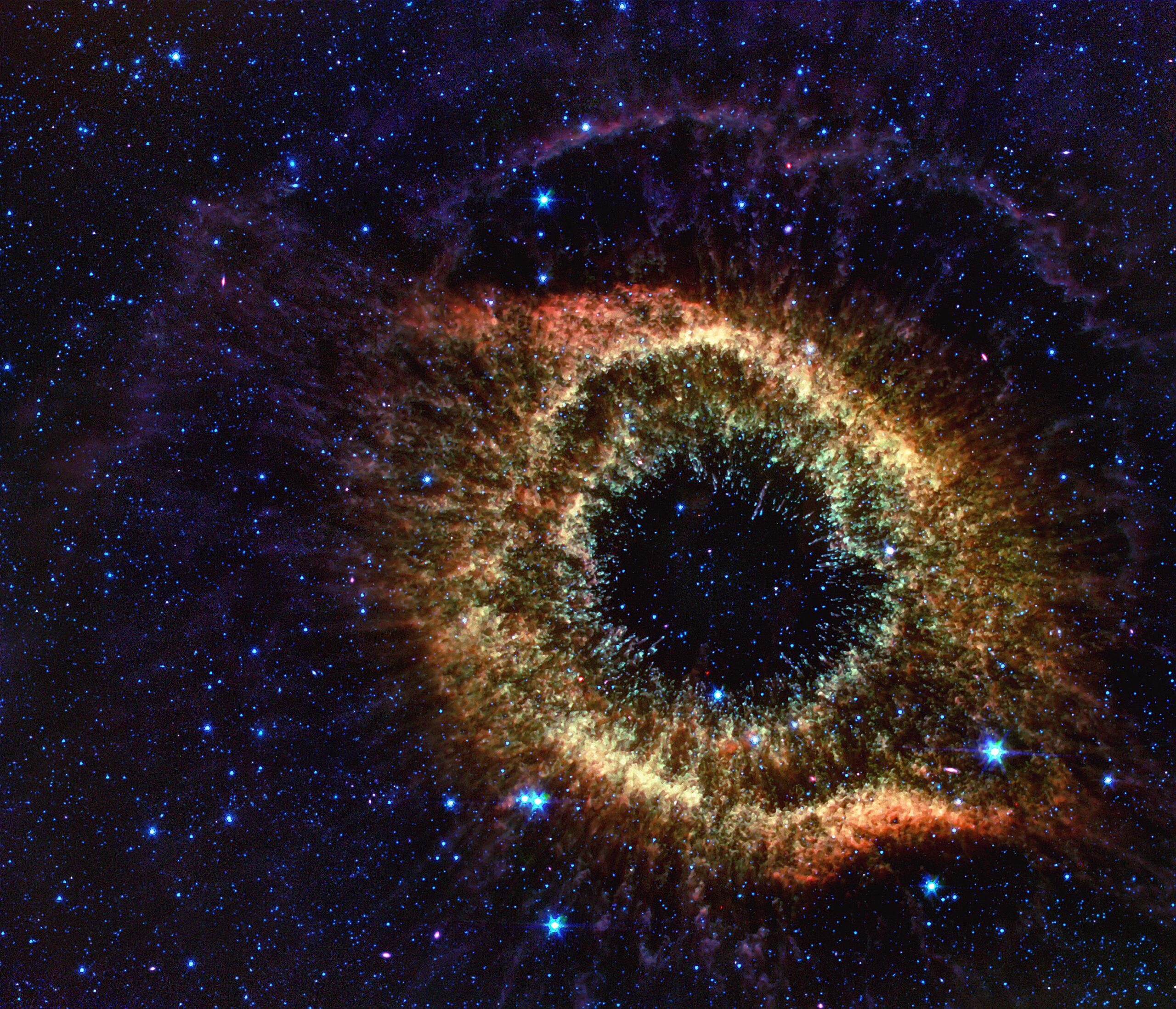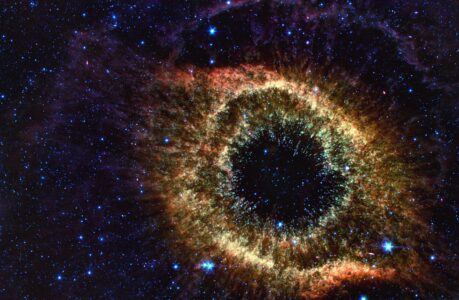Witness the Spectacle of NGC 7293 – The Helix Nebula – Illuminating the Irish Night Sky
The universe never ceases to amaze us with its breathtaking celestial displays. Among the countless jewels scattered across the night canvas, NGC 7293, famously known as the Helix Nebula, stands as a brilliant testament to the grandeur of the cosmos. This captivating cloud of gas and dust, situated in the Aquarius constellation, offers a mesmerizing sight for stargazers, and lucky for those in Ireland, it’s a celestial marvel that can be observed with the naked eye or through telescopic lenses. In this awe-inspiring journey, we delve into the intricacies of NGC 7293 and unveil how to witness its splendor from the vantage point of Ireland.
The Helix Nebula: A Stellar Jewel
The Helix Nebula, a gaseous and dusty remnant of a dying star, is a prime example of a planetary nebula. This term can be misleading, as it has nothing to do with planets. Rather, it refers to the resemblance of these nebulae to distant, hazy planets when viewed through early telescopes. NGC 7293 is a true celestial gem, located approximately 700 light-years away from Earth. Its intriguing appearance is akin to a colossal cosmic eye, earning it the nickname “Eye of God.”
The mesmerizing central star, at the heart of NGC 7293, was once a sun-like star. As it exhausted its nuclear fuel, gravitational forces caused its outer layers to be expelled into space. The result is the breathtakingly intricate Helix Nebula we witness today. The gaseous tendrils that stretch outward in delicate arcs and swirls are a stunning testament to the dynamic forces at play in the universe.
The Dance of Light and Color
NGC 7293 is not only an astronomical wonder but also a feast for the eyes, adorned with a kaleidoscope of colors. These hues originate from various gases present in the nebula, each emitting light at distinct wavelengths. Oxygen emits blues and greens, while reds and purples come from hydrogen and nitrogen. The interplay of these colors paints a celestial masterpiece against the black backdrop of space.
Observing the Helix Nebula from Ireland offers a unique opportunity to witness this interstellar ballet of light and color. However, to fully appreciate its intricate details, the right conditions and a little help from technology can make all the difference.
Ideal Conditions for Observation
While NGC 7293 is visible from Ireland throughout the year, certain factors can significantly enhance your viewing experience. These include:
1. Dark Skies: To truly grasp the beauty of the Helix Nebula, escape the light pollution of urban areas. Head to rural or remote locations where the night sky remains unperturbed by artificial lights.
2. Clear Atmosphere: Stable atmospheric conditions are crucial for clear and steady viewing. Choose nights with minimal atmospheric turbulence, such as during cool, crisp autumn or winter evenings.
3. New Moon Phase: The Moon’s brightness can diminish the visibility of faint objects like the Helix Nebula. Opt for nights close to the New Moon phase, when the Moon is least illuminated.
Equipping Yourself for Exploration
While the Helix Nebula can be glimpsed with the naked eye under optimal conditions, using binoculars or telescopes will reveal its intricate details. Here’s how to make the most of your stargazing equipment:
1. Binoculars: A pair of binoculars with good light-gathering capabilities can provide a wonderful starting point. They offer a wider field of view, allowing you to take in the surrounding starry landscape along with the nebula itself.
2. Telescopes: Telescopes offer a closer look at NGC 7293, revealing its intricate layers and delicate arcs. A telescope with a moderate to high magnification capability is ideal for observing planetary nebulae like the Helix Nebula.
3. Filters: Using specialized nebula filters can enhance the contrast of the nebula against the background sky. Filters that isolate specific wavelengths of light emitted by the nebula’s gases can unveil hidden details.
Navigating the Night Sky from Ireland
Locating NGC 7293 in the Irish night sky requires a basic understanding of celestial coordinates and constellations. Here’s a step-by-step guide:
1. Identify Aquarius: The Helix Nebula resides in the constellation Aquarius. Look for the distinctive pattern of stars that make up this celestial water bearer.
2. Use Star Maps: Utilize astronomy apps or printed star maps to locate Aquarius in the night sky. These maps will help you identify key reference points and guide you toward NGC 7293.
3. Find the Asterism: Within Aquarius, find the asterism known as the “Water Jar.” It resembles a Y shape. NGC 7293 is located near the base of this asterism.
Patience and Perseverance
Stargazing is an endeavor that requires patience and a sense of wonder. Even with the right conditions, equipment, and knowledge, the universe may not always reveal its secrets immediately. Be prepared for moments of stillness and contemplation as you search for NGC 7293.
Connecting with Astronomy Enthusiasts
In the digital age, connecting with fellow astronomy enthusiasts has never been easier. Online forums, social media groups, and local astronomy clubs can provide valuable insights, tips, and even group observation events. Sharing your experiences and learning from others can enrich your journey of exploring NGC 7293 from Ireland.
A Celestial Memory to Treasure
As you gaze at the Helix Nebula from the Irish countryside, take a moment to ponder the incredible journey of light that has traversed vast cosmic distances to reach your eyes. The photons hitting your retinas left the nebula hundreds of years ago, carrying with them the story of a dying star’s majestic transformation.
NGC 7293, the Helix Nebula, is a reminder of the boundless beauty and mystery that the universe holds. Its celestial dance of colors and light serves as a timeless spectacle, inspiring generations to look up and wonder about the cosmos.
So, pack your binoculars, study the star maps, and set out on a celestial adventure. NGC 7293 awaits, ready to unveil its splendor in the velvet expanse of the Irish night sky.

